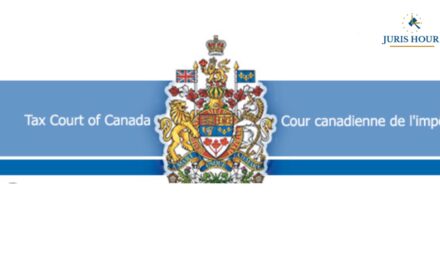Author: Khushi J Prajapati
A Double Taxation Avoidance Agreement (DTAA) is an international treaty designed to prevent the same income from being taxed in two different jurisdictions. It arises from the need to address the challenges faced by individuals and businesses engaged in cross-border activities, where income can be subject to tax in both the country where it is earned (source country) and the country of the taxpayer’s residence (residence country).
Without a DTAA, this double taxation can create a significant financial burden, discouraging international trade, investment, and economic cooperation. By clearly defining tax rights and obligations, DTAAs help streamline tax processes and provide relief to taxpayers, ensuring that income is not unfairly taxed multiple times.
What types of income are covered by Double Taxation Avoidance Agreements (DTAAs) and how do they address the issue of double taxation?
DTAAs cover a range of income types, including business profits, dividends, interest, royalties, fees for technical services, capital gains, salaries, pensions, and immovable property. These agreements stipulate the country has the right to impose taxes on that income thus averting double taxation. For this reason, they may provide simply the most favorable rates or exemptions.
Rates of DTAA
They are generally lower compared to domestic rates and are negotiated between the countries involved. For example, withholding tax on dividends may be anything from 5% to 15% while that of interests as well as royalties might fall between 5% and 15%. About capital gains taxes there might be exemptions or reduced rates with some DTAAs.
DTAAs Signed by India
As of 2024, India has signed Double Taxation Avoidance Agreements (DTAAs) with over 100 countries. Some of the important are mentioned below.
United States United Kingdom Germany France Canada Australia Japan Singapore United Arab Emirates South Korea and many more
Recent Developments
The DTAA between India and Mauritius was amended in April 2024, introducing the Principal Purpose Test (PPT) into its provisions. This clause helps assess if foreign investment can benefit from under India-Mauritius DTAA or not. For decades now, Mauritius has been among the most sought-after destinations for investment since it did not subject capital gains to taxes. In 2016, however, an adjustment was made to this taxation agreement which allowed India to impose taxes starting from April 1st, 2017 on share trades that had logged into records via Mauritius.
On December 30th, 2016, Singapore and India agreed on an amendment to their Double Taxation Avoidance Agreement (DTAA) related to capital gain income. The revised agreement took effect from April 1, 2017, with Indian authorities aiming at clamping down on investments entering the country through shell companies thereby curbing tax evasion practices. In February 2024, it was reported that Mauritius had decided to amend its DTAA with India following the OECD’s proposal on base erosion and profit shifting.
The two countries signed this agreement for the first time in 2016. The first signing of the India-Cyprus DTAA took place in November 2016 but it was later amended in the following year by including a ‘Grandfathering’ provision concerning investments made before April 1, 2017. Additionally, both nations agreed to use more of the Joint Economic Committee as one way of strengthening mutually beneficial cooperation across all sectors of shared interest. The Supreme Court of India held that in 2023 it is necessary to notify changes made in Double Taxation Avoidance Agreements (DTAA) under section 90 of the Income Tax Act, 1961. The decision reviewed most-favored-nation (MFN) clauses found in DTAAs signed by India France, Netherlands, and Switzerland. Following this judgment, in March 2024 Income Tax Department took steps to harmonize with it because it had lowered tax rates from Indo-German DTAA to persons who were affected by the Indo-Spanish DTAA. Slowly, India embraced OECD standards governing residency and transfer pricing regulations signing the OECD’s Multilateral Competent Authority agreement for automatic Country-by-Country report (CbCRE).
Example of DTAA
Amit invests in Australian stocks and receives dividend income each year. Australia withholds a tax of 15% on such dividend payouts.
Let’s examine why a 15% deduction occurred in Australia. This is due to the India-Australia DTAA, which stipulates that any dividend income earned in Australia will be subject to a 15% tax rate in Australia. According to the DTAA, this dividend income may also be subject to taxation in India based on Amit’s residence status.
| Amount | Particulars |
| 3000000 | Dividend |
| 15% | Withholding tax 450000 |
| 2550000 | Net Income |
Amit can claim a foreign tax credit for the taxes deducted in Australia.
Let’s calculate the Foreign Tax Credit (FTC). For simplicity, we will assume that Amit is in the 30% tax bracket in India and that the tax rate in India is a flat 30% (excluding any additional cess for this example).
| Amount | Description |
| 30,00,000 | Dividend |
| 15% | Withholding Tax (4,50,000) |
| 30% | Tax in India (9,00,000) |
| Foreign Tax Credit (FTC) | Lower of (4,50,000) or (9,00,000) = 4,50,000 |
| Tax Payable in India | (9,00,000) – (4,50,000) = 4,50,000 |
Benefits and Documents Required for Claiming DTAA
DTAA provides substantial returns to Indians, enabling them to obtain a tax credit on any foreign income taxable outside India. This helps avoid any undue repetition of taxation and encourages the smooth running of international business activities. It also enhances legal certainty as it defines the procedures involved in taxing international earnings and thereby attracts foreign investments. In addition, many cases come with reduced withholding taxes on income earned from interest charges, dividends, or royalties due to which they reduce the overall cost of service earnings or investment flows. A Tax Residency Certificate is one of the vital documents that one has to possess to take advantage of these benefits.
Documents Required
To claim benefits under the Double Taxation Avoidance Agreement (DTAA), you need to submit several documents. These typically include a Tax Residency Certificate (TRC), an indemnity or self-declaration form, a self-attested copy of your PAN card, a self-attested visa, proof of Indian origin (such as a PIO card), and a self-attested copy of your passport. For claiming tax benefits in India, the TRC must be obtained by submitting Form 10FA to the tax authorities, and once verified, the certificate will be issued in Form 10FB.
Conclusions
In conclusion, Double Taxation Avoidance Agreements (DTAAs) are essential for mitigating the risk of double taxation on cross-border income, thereby facilitating international trade and investment. For India, these agreements not only ease the tax burden on individuals and businesses but also enhance global economic integration and attractiveness as a foreign investment destination.











